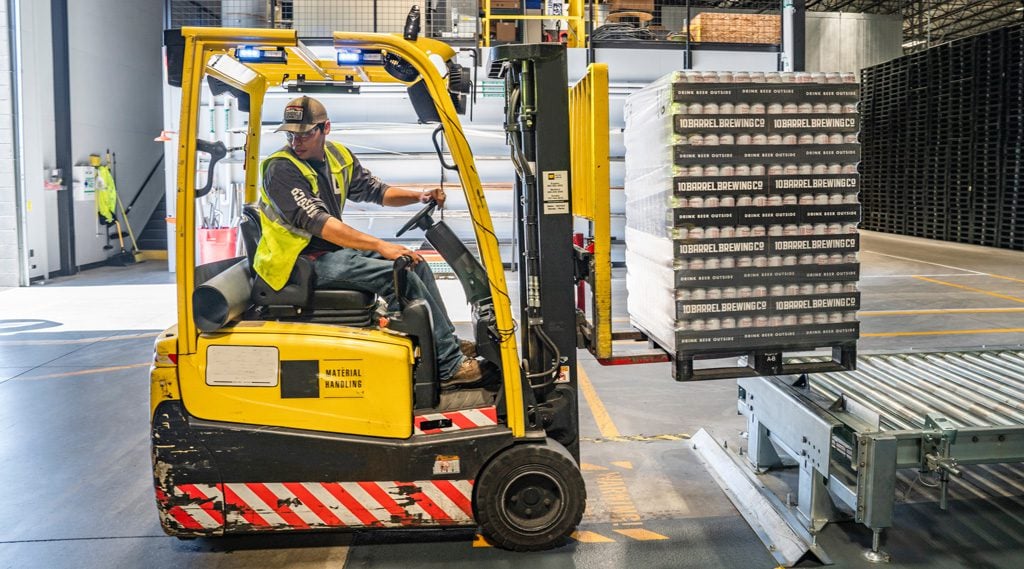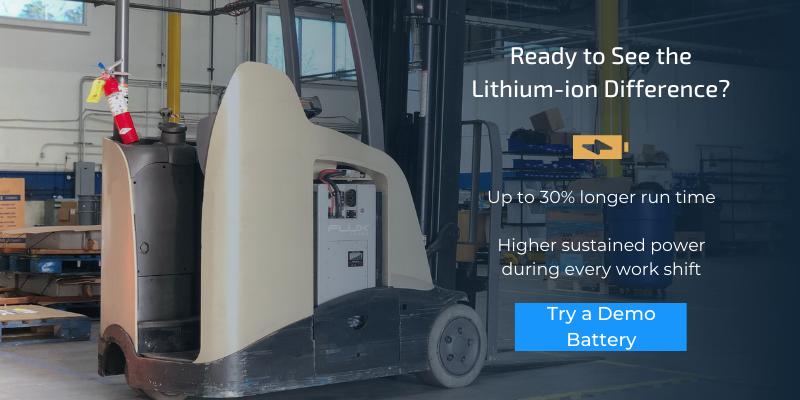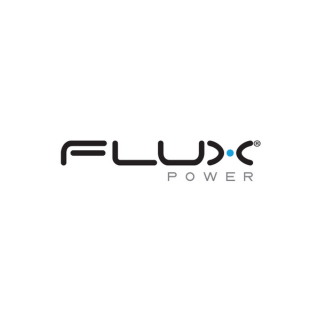Breaking Down the Differences Between Counterbalance and Reach Forklifts
They are good for indoor and outdoor use, but work best on smooth, flat surfaces. Counterbalance forklifts are ideal for moving heavy, bulk loads and come in three- and four-wheel varieties. These types of forklifts come with a range of power options such as gas, diesel, propane, and electric.
Reach trucks are best for accessing loads in tall or tight spaces because of their ability to maneuver through narrow aisles and tall warehouse shelving units.
Reach trucks, unlike counterbalanced forklifts, are primarily designed for indoor use only. They are designed with stabilizing legs so they can extend their forks out to grab loads on tall shelves. Thanks to the stabilizing legs, they don’t need a counterbalanced rear end.
Why Do Warehouses Use Counterbalance Forklifts?
Counterbalance forklifts are adept at handling heavy loads and can easily unload/load trucks or move shipments around a warehouse.
Four-wheeled counterbalance forklifts are easy to use and don’t require additional training that a reach truck might need. Three-wheeled counterbalance forklifts offer greater maneuverability, and they offer more flexibility in usage than a reach truck in warehouse operations.
You can lift a wide range of weights with a counterbalance forklift. There are a variety of auxiliary attachments that can easily be attached to the forks to increase operational versatility.
Definition: Forklift Center of Gravity
The forklift center of gravity is the point at which the total weight of the lift (and load) is balanced. But it is not constant. Once a load is picked up, the center of gravity changes because of the extra weight on the forks.
Understanding the forklift center of gravity is key to making sure that the equipment is operated safely. Failing to understand how the center of gravity shifts with different loads can result in tip-overs and potential injuries.
Counterbalance forklifts have a different center of gravity than reach trucks or other forklift designs. Because of the weight on the back, the center of gravity is balanced out differently.
When the load pushes down on the forks, the counterbalance in the back pushes down on the back of the truck to keep the wheels on the ground. Do not surpass this balance, or operators risk tipping the forklift over.
How Electric Forklifts Can Improve Warehouse Operations
Converting a warehouse forklift fleet to lithium-ion power can dramatically improve warehouse operations. Once warehouse operations consider all the pros and cons to the different power sources to for forklifts, it is easy to see that lithium-ion technology offers more benefits. These benefits include:
Uptime
If a company is running a multi-shift operation, they can’t afford forklift downtime.
Opportunity charging gives operators the ability to maximize uptime and charge at the operator’s convenience. Operators can run 2- or 3-shift operations with just one lithium-ion battery by opportunity charging during breaks, and fast charging at rates lead-acid can’t handle.
Not only do lithium-ion batteries have opportunity charging capabilities, but they are also able to stay in operations longer. With lithium-ion, tests show up to 2x longer runtimes on a single charge compared to traditional lead acid options. A longer discharge enables multi-shift runs before needing to be charged.
Safety
Lithium-ion batteries do not produce any toxic gasses when charging, making them a safe option for indoor warehouse operations.
With lithium-ion battery packs remaining in the forklift during charging, less lifting is needed. This means, operators will be less at risk of being injured lifting batteries in and out of trucks.
ROI
Maximized uptimes mean you’re getting more bang for your buck. While lithium-ion might be more expensive up front, you’ll quickly see a return on investment because of the many benefits that come with lithium-ion batteries. These benefits include:
- Lower energy costs
- No maintenance costs
With less energy usage, no maintenance and no extra labor costs with lithium-ion electric forklifts, warehouse operations can focus more on maximizing productivity.
Revolutionize Your Operations with Improved Counterbalance Forklift Performance
Counterbalance forklifts can expedite your warehouse operations thanks to their flexibility and might. Depending on the type of counterbalance forklift, they can lift heavier loads and still manage tight maneuvers.
But understanding different forklifts and their center of gravity is a must. By understanding how each forklift operates, employees can prevent safety hazards that could happen. Learning the fundamentals of forklift safety as well as which forklift power is the safest is important to warehouse operations.
Lithium-ion batteries, not only, delivers forklift safety, but also more uptime, and a return on investment. With lithium-ion forklift technology, warehouse operations can dramatically improve their performance and safety.



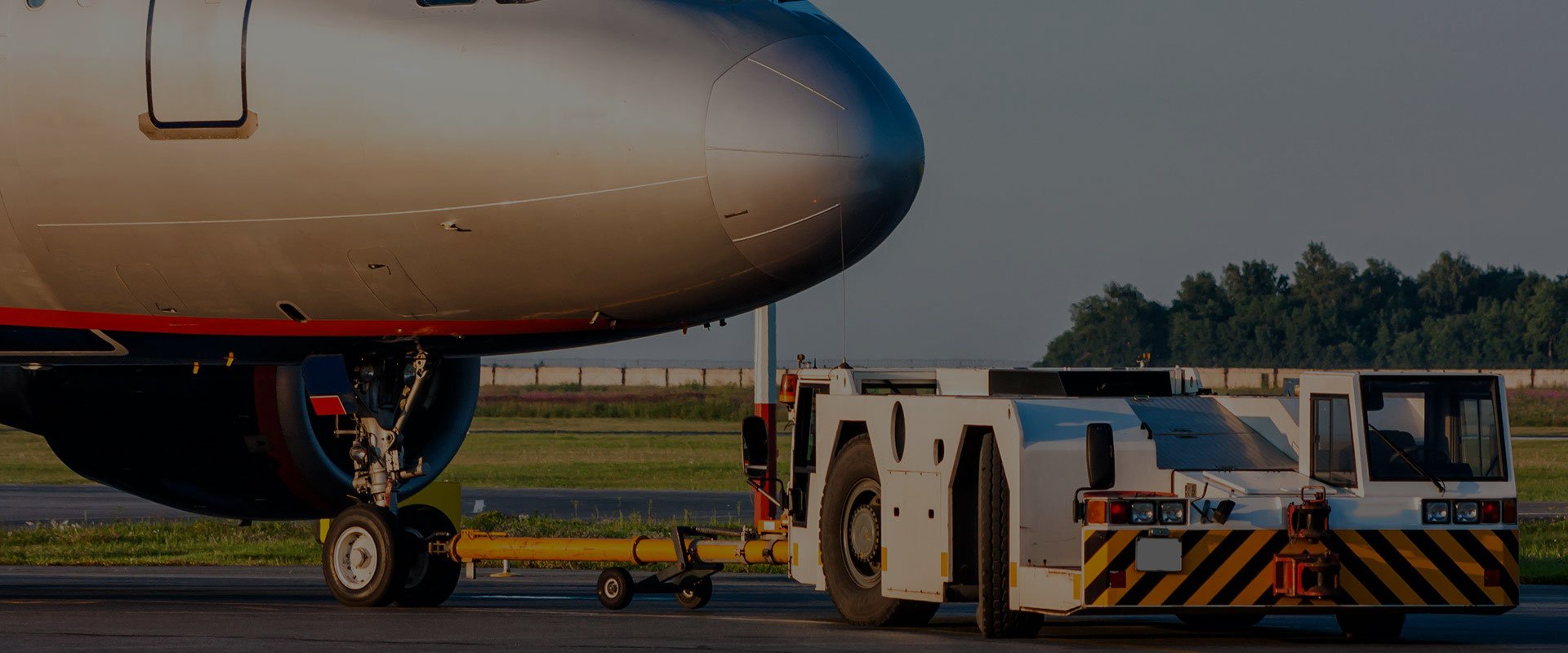
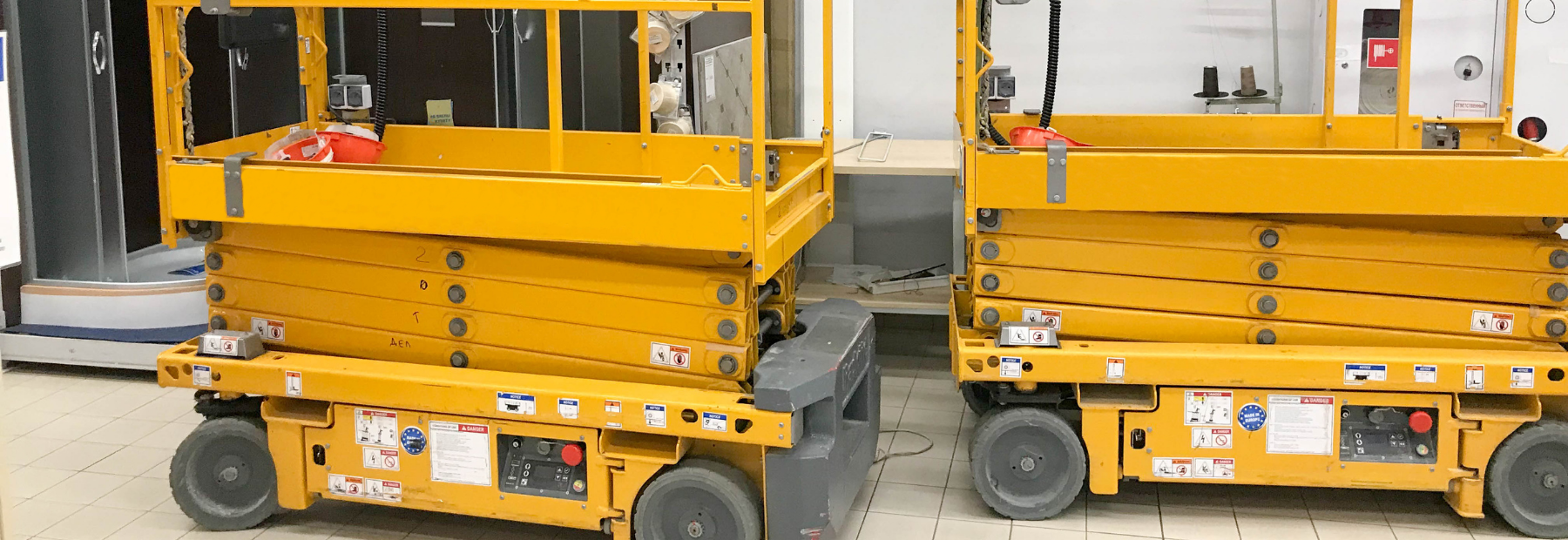
%20(1).png?width=1080&height=1080&name=Lithium-Ion%20VS%20Lead%20Acid%20eBook%20(Menu%20Visual)%20(1).png)
%20(1)-3-1-1-1-1.png)
